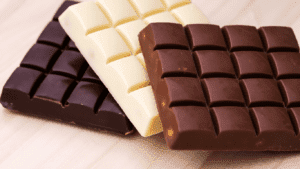Shahi jeera, often called black cumin or caraway seeds, is a spice that brings magic to your kitchen. Its warm, nutty flavor and sweet aroma make dishes like biryanis and curries unforgettable. Known as a “royal” spice in Indian cooking, shahi jeera adds depth without overpowering other ingredients. It’s not just about taste—it’s packed with health benefits, from helping digestion to boosting immunity. Whether you’re a home cook or just love good food, this article will show you why shahi jeera deserves a spot in your pantry. We’ll cover its history, uses, benefits, and tips to make your meals shine. Let’s dive into the world of this amazing spice.
What Is Shahi Jeera?
Shahi jeera, or black cumin, is a small, dark seed with a unique flavor, often used in Indian and Middle Eastern dishes. Unlike regular cumin, it’s milder, with a sweet, floral note that adds richness to food. Its scientific name is Bunium persicum, and it’s native to Central Asia and Northern India. The name “shahi” means royal, hinting at its use in fancy Mughal dishes. You’ll find it in biryanis, pulaos, and spice mixes like garam masala. It’s a versatile spice that works in both savory and sweet recipes, making it a must-have for any cook.
The Difference Between Shahi Jeera and Cumin
Shahi jeera looks like cumin but is darker, longer, and thinner. While cumin has a strong, earthy taste, shahi jeera is sweeter and less sharp, with a nutty, anise-like flavor. Cumin is used in everyday dishes like curries, but shahi jeera is saved for special recipes like biryanis or breads. They’re not interchangeable because their tastes are so different. Knowing this helps you use shahi jeera to add a unique touch to your cooking.
Where Shahi Jeera Comes From
Shahi jeera grows in places like Kashmir, Iran, and Central Asia. In India, it’s often called Kashmiri jeera because it’s widely used in Kashmiri cuisine. The seeds are harvested from the Bunium persicum plant, which thrives in cooler climates. Its history goes back to ancient times, used in royal kitchens for its delicate flavor. Today, it’s sourced from quality spice markets to ensure freshness and authenticity.
The Flavor and Aroma of Shahi Jeera
Shahi jeera’s flavor is warm, earthy, and slightly sweet, with a hint of anise or pepper. When toasted in oil or ghee, it releases a rich, floral aroma that makes dishes smell amazing. Unlike cumin’s bold kick, shahi jeera is subtle, blending well with other spices. It’s perfect for dishes where you want depth without overwhelming the main ingredients. From rice to meats, it adds a royal touch that makes every bite special. Try it, and you’ll see why it’s a favorite in Indian cooking.
How to Use Shahi Jeera in Cooking
To get the best flavor, toast shahi jeera in hot oil or ghee until it pops, releasing its oils. Add it to biryanis, pulaos, or curries for a nutty depth. You can also sprinkle it on breads or mix it into spice blends like garam masala. For a twist, use it in cookies or pastries—it pairs well with sweet flavors. Just don’t cook it too long, or it might turn bitter.
Pairing Shahi Jeera with Other Spices
Shahi jeera plays well with spices like coriander, cinnamon, or cloves. In garam masala, it adds a sweet balance to stronger flavors. Try it with cardamom in rice dishes or with turmeric in curries for a warm, rounded taste. It also complements herbs like mint or cilantro in chutneys. Experimenting with these combos can make your dishes stand out with a rich, layered flavor.
Health Benefits of Shahi Jeera
Shahi jeera isn’t just tasty—it’s good for you too. Packed with antioxidants, fiber, and minerals like iron and calcium, it supports your health in many ways. It’s known for helping digestion, reducing bloating, and even aiding weight loss. In Ayurveda, it’s used to treat coughs, skin issues, and more. Adding shahi jeera to your meals not only boosts flavor but also gives your body a natural health boost. It’s like medicine you can eat
Digestive Health and More
Shahi jeera is a carminative, meaning it helps with bloating, gas, and indigestion. It stimulates digestive enzymes, making food easier to break down. It’s also believed to ease colic and support gut health. Some say it can lower bad cholesterol and help with weight management by boosting metabolism. A pinch in your dishes or tea can keep your stomach happy and healthy.
Benefits for Skin and Heart
Rich in antioxidants, shahi jeera fights infections and may improve skin conditions like eczema or psoriasis. It’s also thought to support heart health by regulating blood pressure and cholesterol. For women, it can ease menstrual cramps and boost reproductive health. Adding it to your diet is an easy way to care for your skin, heart, and overall well-being while enjoying tasty meals.
Shahi Jeera in Indian Cuisine
In Indian cooking, shahi jeera is a star in dishes like biryani, pulao, and rich curries. Its sweet, nutty flavor makes it perfect for Mughal-inspired recipes, where it adds a royal touch. It’s a key ingredient in garam masala and often used in Kashmiri dishes. You’ll also find it in tandoori marinades or sprinkled on naan for extra aroma. Shahi jeera turns simple ingredients into something special, making your meals feel like a feast.
Role in Biryanis and Pulaos
Shahi jeera is a must for biryanis and pulaos. Toast it in ghee, add rice, and let its aroma infuse the dish. It gives a subtle sweetness that balances spicy gravies or meats. In Kashmiri pulao, it’s often paired with nuts and saffron for a rich, festive flavor. This spice makes rice dishes unforgettable, perfect for special occasions or family dinners.
Use in Spice Blends and Curries
Shahi jeera is a key part of garam masala, adding warmth to the mix. In curries, it’s used in tadka (tempering) to release its flavor into the oil. It works great in creamy dishes like korma or dal makhani, where its mild sweetness shines. Mix it with other spices to create your own masala for a personal touch in your cooking.
Beyond Indian Cooking
Shahi jeera isn’t just for Indian dishes—it’s a global spice. In Middle Eastern cuisine, it’s used in breads and stews for a nutty flavor. In Europe, it’s called caraway and sprinkled on rye bread or added to soups. You can even brew it in tea for a warm, soothing drink. Its versatility makes it a fun spice to experiment with in all kinds of recipes, from savory to sweet.
Baking with Shahi Jeera
In baking, shahi jeera adds a unique twist. Sprinkle it on bread, biscuits, or pastries for a nutty, anise-like flavor. It pairs well with sweet ingredients like cinnamon or sugar, making it great for cookies or cakes. In European recipes, it’s used in rye bread or savory crackers. Try adding a pinch to your dough for a surprising, aromatic kick.
Shahi Jeera in Drinks and Infusions
Shahi jeera can be steeped in hot water for a soothing tea that aids digestion. In Indian masala chai, it adds a warm, spicy note. You can also mix it into herbal drinks with mint or ginger for a refreshing twist. Its mild flavor makes it a great addition to beverages, offering both taste and health benefits in every sip.
Tips for Using Shahi Jeera
To make the most of shahi jeera, store it in an airtight container away from heat to keep it fresh. Toast it lightly in oil or ghee to bring out its aroma, but don’t overcook, or it’ll turn bitter. Start with a small amount—its flavor is strong but subtle. If you can’t find shahi jeera, a tiny bit of cumin can work, but it won’t be the same. Buy from trusted brands for quality and authenticity.
How to Store Shahi Jeera
Keep shahi jeera in a cool, dark place in a sealed container to preserve its flavor. It can last up to a year if stored right. Avoid humidity, as it can make the seeds clump or lose their aroma. Check for freshness by smelling—if the scent is weak, it’s time to replace it. Quality matters, so choose reputable sources like spice markets or trusted online stores.
Avoiding Common Mistakes
Don’t overheat shahi jeera—it can turn bitter if cooked too long. Use it sparingly, as its flavor is potent. Don’t confuse it with cumin or nigella seeds; they’re different and won’t give the same taste. Always toast it gently to release its oils, and add it early in cooking for savory dishes or at the end for breads to keep its flavor intact.
Where to Buy Shahi Jeera
You can find shahi jeera at Indian grocery stores, online spice shops, or markets like Khari Baoli in India. Look for brands like Bharat Masala or Yuvika Herbs for quality. Online stores offer packs from 100g to 1kg, often in containers or ziplocks. Check reviews to ensure you’re getting pure, fresh seeds without additives. Buying from trusted sources guarantees the best flavor for your dishes.
Choosing Quality Shahi Jeera
Pick shahi jeera that’s dark, long, and has a strong, sweet aroma. Avoid seeds that look dull or smell weak—they might be old. Check for organic options free of preservatives, like those from Kashmirica or Moolihai. Read labels to ensure you’re getting Bunium persicum, not cumin or nigella. Good quality makes a big difference in taste and health benefits.
Online vs. Local Markets
Online stores like BuyKhariBaoli.com or BharatMasala.net offer convenience and variety, with detailed descriptions and reviews. Local Indian markets let you smell and check the seeds before buying, ensuring freshness. Online is great for bulk buys, while local shops are better for small amounts. Compare prices and quality to find the best deal for your cooking needs.
Final Thoughts
Shahi jeera is a small spice with a big impact. Its sweet, nutty flavor and health benefits make it a kitchen essential, from biryanis to breads to teas. Whether you’re cooking Indian classics or experimenting with global recipes, shahi jeera adds a royal touch. Store it right, use it wisely, and buy quality seeds to get the most out of it. Try this versatile spice and see how it transforms your meals into something special. Grab some shahi jeera and start cooking like royalty today.




